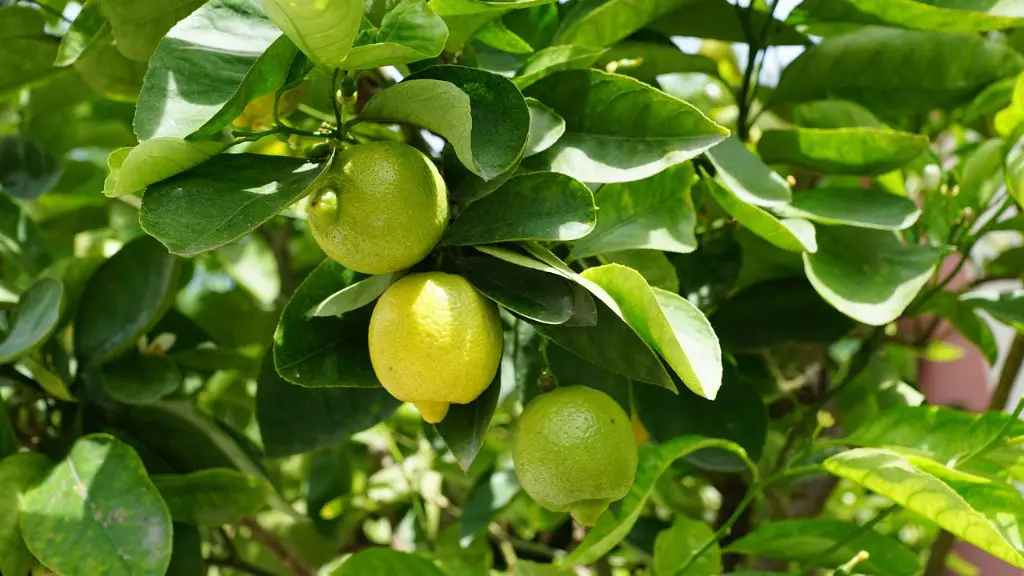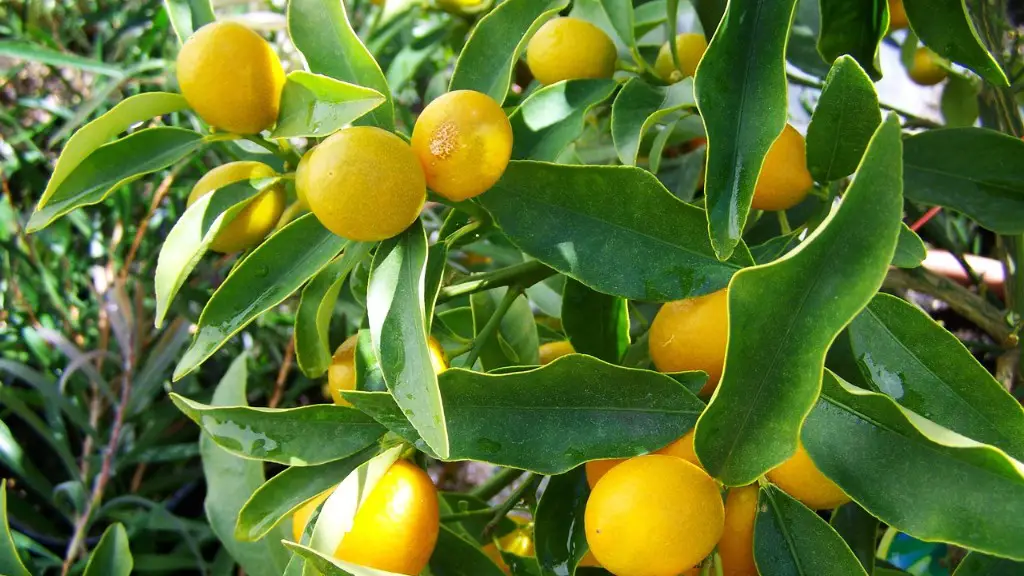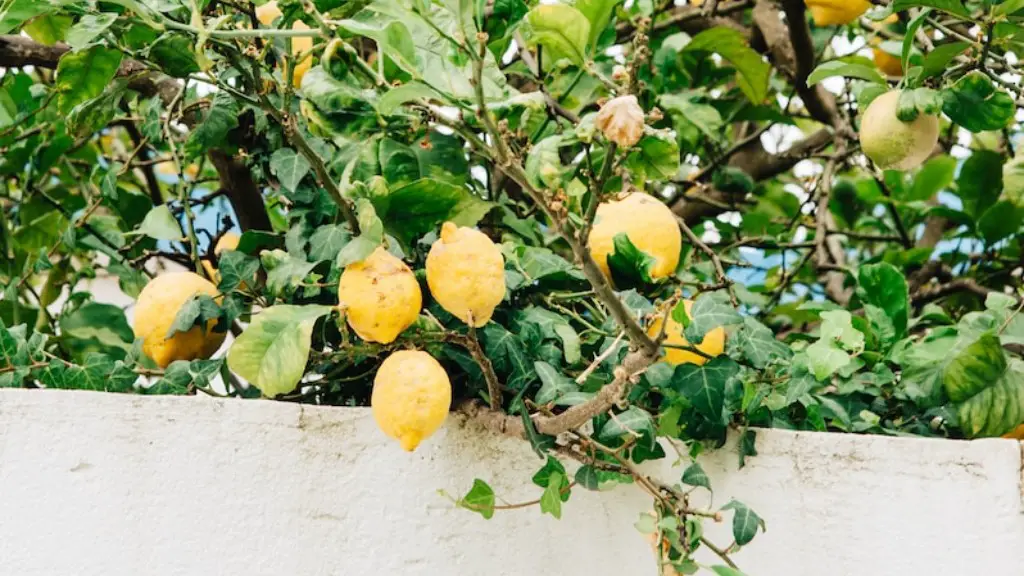Lemon trees are one of the most popular fruit trees to grow in the home landscape. They are relatively easy to care for, provide a beautiful ornamental display, and produce an abundance of delicious lemons. If you live in an area with a suitable climate for lemon trees, planting one in the ground is a great way to enjoy all that this wonderful tree has to offer. Here are a few tips on how to successfully plant a lemon tree in the ground.
-First, find a spot in your yard that gets a lot of sunlight. Lemon trees need at least 8 hours of sunlight each day.
-Next, make sure the ground is well-drained. Lemon trees will not do well in wet or soggy soil.
-Dig a hole that is twice the size of the tree’s root ball.
-Carefully remove the tree from its container and place it in the hole.
-Fill in the hole with soil, making sure to not plant the tree too deeply.
-Water the tree deeply and regularly for the first few months.
How do you prepare the ground for a lemon tree?
Preparing the soil for a citrus tree is easy. You just need to dig a hole that is about one foot larger than the root ball all the way around. Also make the hole about a foot deeper than the tree’s root ball, but don’t bury the tree that far down just yet.
Lemon trees are a great addition to any home and can tolerate a range of soils, including poor soil. Most lemon trees prefer well-drained, slightly acidic soil, however, so it’s important to plant them in a location that meets those requirements. Lemon trees should be set slightly higher than ground level, so be sure to dig a hole that is shallower than the length of the root ball. Once the tree is in the hole, replace the soil and tamp it down firmly.
Do lemon trees grow better in pots or ground
Lemon trees in containers are more vulnerable to the cold and drought. While a lemon tree in the ground can take mild frost and cold, a lemon tree in a container cannot. A lemon tree in a container has a hardiness zone that is one zone higher than the USDA recommended zone.
If you live in a place with a climate that gets cold, it is best to grow your lemon tree in a pot inside your house. Place the pot in an area that gets a lot of light, like next to a window or in a sunroom. The lemon tree will do best in a tropical climate, so keeping it indoors in a pot is the best way to ensure that it will thrive.
What month do you plant lemon trees?
Spring is the best time to plant your lemon tree to avoid any harsh winter or summer temperatures. This also depends on what growing zone you are located in so check and make sure that the ground is not frozen and you are past the risk of frost.
One of the reasons your lemon tree leaves could be turning yellow is a lack of magnesium in the soil. Epsom Salts helps correct magnesium deficiency. Mix 30g of Epsom Salts per litre of water (approximately 2 tablespoons), per tree.
How deep should you bury a lemon tree?
Make sure to dig a hole that’s about 15 times the width of the root ball and about as deep as the root ball is tall. This will give the tree enough room to grow and will help prevent water from pooling around the trunk, which can lead to rot and disease.
Citrus need well drained soil, so selecting the right potting mix is important. Commercial potting mixes with peat moss, perlite, vermiculite and compost are fine to use as long as the soil is light enough to drain water well.
How often should you water a lemon tree after planting
Irrigation is one of the most important cultural practices for citrus. In general, young citrus trees should be watered deeply (to encourage a deep root system) once or twice per week for most of the year. In sandy soils, or when the weather is hot and windy, irrigation frequency should be increased. In clay soils, irrigation can be decreased to once per week during the winter months.
The seven problems of lemon trees are: Lesions on leaves, black moldy spots, fuzzy gray mold and brown spots, tan spots with dark outlines, brown scabs, and more. Each problem has its own solution, so be sure to read the care guide thoroughly before tackling any of these problems. With a little care and attention, your lemon tree will be thriving in no time!
How long does it take for a lemon tree to bear fruit?
Lemon trees are a popular choice for many home gardeners, as they are relatively easy to care for and can produce an abundance of delicious fruit. When grown outdoors in warm climates, regular lemon trees can reach up to 20 feet in height and may take up to six years to bear fruit. However, the Meyer lemon tree is a hybrid variety that is smaller in size and typically produces fruit sooner than the regular lemon tree. Whether you choose to grow a regular or Meyer lemon tree, you can enjoy the tart and juicy fruits for years to come!
This specially blended mixture is great for growing cactus, palm, citrus and other succulents. It is a mix of sphagnum peat moss, composted forest products, sand and perlite. This gives your plants the perfect mix of nutrients and drainage that they need to thrive.
Can lemon trees survive winter outside
The winter season can be tough on citrus plants. It is important to understand how cold temperatures affect citrus trees. Among the citrus types most easily killed or damaged by freezing weather are citrons, lemons and limes. Temperatures in the high 20s will kill or severely damage these plants.
Citrus trees love sunlight and warmth, so a south-facing bed is best. A spot next to your house or garage can provide added protection and warmth, but don’t get too close: your citrus plant will need a good 6-8 feet of space between it and a structure or driveway, sidewalk, sewer lines or septic system.
What kind of soil do I need for lemon tree?
Sandy loam soil is ideal for lemon trees because it has good drainage while still retaining moisture and nutrients. This type of soil is also easy to work with, making it a good choice for those who are new to gardening.
Fall is an ideal time to establish a citrus plant because the temperatures are milder and the plant can weather the winter more effectively. Citrus plants prefer a hot south or west facing location with good draining soil. By planting the citrus before frost, you can ensure that it will have the best chance of thriving in its new environment.
Do lemon trees need a lot of water
Lemon trees usually need an inch or two of water applied to their roots once or twice a week. Container-grown lemon trees typically require watering more frequently; they may need to be watered every day or two if they are grown outdoors during hot weather. Lemon tree watering is different for older trees that are planted in the ground; these trees may need to be watered more frequently during hot weather.
The dwarf eureka lemon tree is a good choice for those who want a smaller tree that would not require a lot of space and can be taken indoors. The tree’s size is just 10 to 15 feet when planted directly in the ground. However, they tend to be just around 3 to 5 feet when planted in a pot.
Final Words
There are a few things to keep in mind when planting a lemon tree in the ground. First, choose a sunny spot with well-drained soil. Lemon trees will not tolerate wet feet, so make sure the area you choose does not stay soggy after a rain. Second, dig a hole that is twice the width and depth of the tree’s root ball. Place the tree in the hole and backfill with soil, tamping it down as you go. Once the tree is planted, water it well.
When deciding how to plant a lemon tree, it is important to consider the climate in which the tree will be grown. Lemon trees thrive in warm, humid climates and need full sun to produce lemons. The tree should be planted in well-drained soil in a location that receives at least six hours of sunlight per day. Careful watering is essential for a lemon tree to thrive. The tree should be watered deeply and evenly, allowing the soil to dry out slightly between watering. Fertilizing the tree regularly will also help it to produce healthy lemons.



